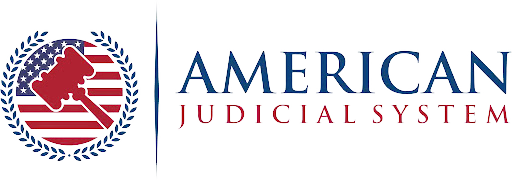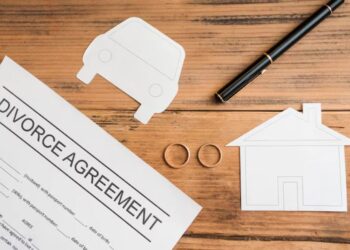After a car accident, the process of seeking compensation for damages can feel overwhelming. One of the key steps in this process is drafting a demand letter for your car accident claim. This letter is a formal request for compensation from the insurance company or responsible party. It serves as an essential tool in negotiating your claim, providing evidence of your losses, and outlining the compensation you expect.
Writing a demand letter can be a daunting task if you are unfamiliar with the process. Fortunately, with the right guidance, you can create an effective demand letter that strengthens your case and helps you achieve a fair settlement.
What Is a Demand Letter?
A demand letter is a formal document sent to the insurance company or the party at fault, requesting compensation for the damages incurred due to the car accident. This letter is the starting point for negotiations in a car accident claim. It lays the groundwork for the amount of compensation you are seeking, which can include medical expenses, lost wages, and pain and suffering.
The demand letter should be clear, concise, and professional. It is essential to include supporting evidence to make your case as strong as possible. A well-written demand letter can significantly increase the chances of a timely and fair settlement.
Key Elements of a Demand Letter for a Car Accident Claim
Writing a demand letter for a car accident claim requires specific details to ensure that it is both comprehensive and persuasive. These elements help make your case stronger and provide clarity about your expectations.
1. Your Personal Information
At the beginning of the demand letter, include your full name, address, phone number, and the date of the letter. This information helps the recipient easily identify your claim and ensures that he or she can contact you if necessary.
2. The Recipient’s Information
Be sure to include the insurance company’s details or the responsible party’s name and contact information. This allows the recipient to quickly recognize who the letter is addressed to and who it pertains to in the car accident claim.
3. A Brief Summary of the Accident
Start by providing a brief summary of the car accident, including the date, location, and circumstances. If the other party was at fault, explain how the accident occurred and why they are liable. If police reports or traffic citations were issued, mention those details as well. This section should be straightforward and factual to set the tone of the letter.
4. The Damages Incurred
After outlining the details of the accident, list the damages you suffered as a result.
This section should cover the following:
- Medical expenses: Include any hospital bills, doctor’s visits, surgeries, rehabilitation costs, and prescription medications related to your injuries. Attach copies of medical records and bills as supporting evidence.
- Lost wages: If your injuries prevented you from working, include a breakdown of your lost income. Provide evidence, such as pay stubs or a letter from your employer, to demonstrate the impact of the accident on your financial situation.
- Property damage: List any damages to your vehicle or personal property. Include estimates or repair bills that show the extent of the damage.
- Pain and suffering: While more subjective, pain and suffering can significantly impact your car accident claim. If your injuries caused significant physical and emotional pain, describe how it has affected your life. Although quantifying pain and suffering can be difficult, provide any evidence that supports your claims, such as testimony from doctors or loved ones.
5. Supporting Evidence
The demand letter should include any supporting evidence that strengthens your claim.
This can include:
- Medical records and bills
- Repair invoices or estimates for your vehicle
- Police reports
- Photos of the accident scene or injuries
- Witness statements
- Correspondence with the insurance company
Including this evidence ensures that the insurance company or at-fault party understands the extent of the damages and supports your request for compensation.
6. The Compensation Requested
Clearly state the amount of compensation you are seeking. This amount should reflect the total of your medical expenses, lost wages, property damage, and any pain and suffering you experienced. Make sure the amount is reasonable and justifiable based on the evidence you provided. In some cases, a car accident lawyer may assist you in determining an appropriate settlement amount, considering factors such as the severity of your injuries and the liability of the other party.
7. A Request for Response
At the end of the demand letter, politely request a response within a reasonable time frame, usually 30 days. You may also mention that if a response is not received, you will pursue further legal action, which could include filing a lawsuit. This serves as a reminder of the importance of resolving the matter promptly.
8. A Professional and Courteous Tone
Throughout the letter, maintain a professional tone. While it is essential to state your needs clearly, it is equally important to avoid using overly aggressive or emotional language. A respectful and calm tone can help you maintain a productive relationship with the insurance company or the at-fault party.
Why a Car Accident Lawyer is Important in the Demand Letter Process
Although it is possible to write a demand letter on your own, working with a car accident lawyer can be highly beneficial, especially when dealing with complex cases or significant injuries.
A lawyer experienced in car accident claims can:
- Help you calculate an appropriate settlement amount.
- Ensure that your letter includes all necessary details and legal language.
- Gather evidence and medical records to strengthen your case.
- Handle negotiations with the insurance company on your behalf.
Having a car accident lawyer involved in the process can significantly improve your chances of securing fair compensation for your injuries and damages.
Key Takeaways for Writing a Demand Letter
A demand letter is a crucial step in the car accident claim process, and drafting it carefully can improve your chances of a successful claim. Ensure that your letter is thorough, concise, and well-supported by evidence. Be realistic about your expectations, and avoid making exaggerated claims. If you are unsure about any part of the process or need assistance, consider working with a car accident lawyer to help you craft an effective demand letter and guide you through the claims process.
By taking the time to write a strong demand letter, you are setting the stage for a more efficient and fair resolution of your car accident claim.










